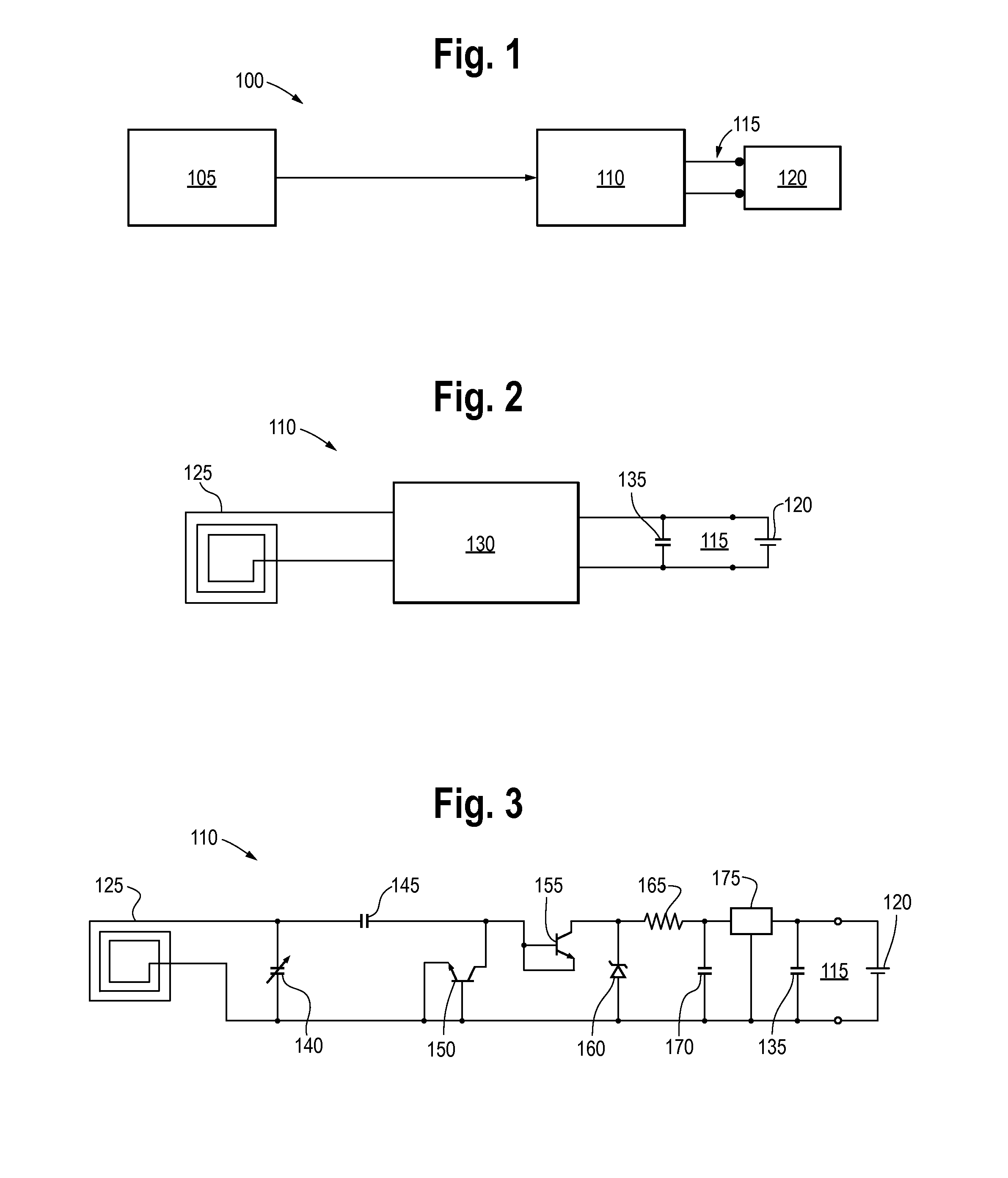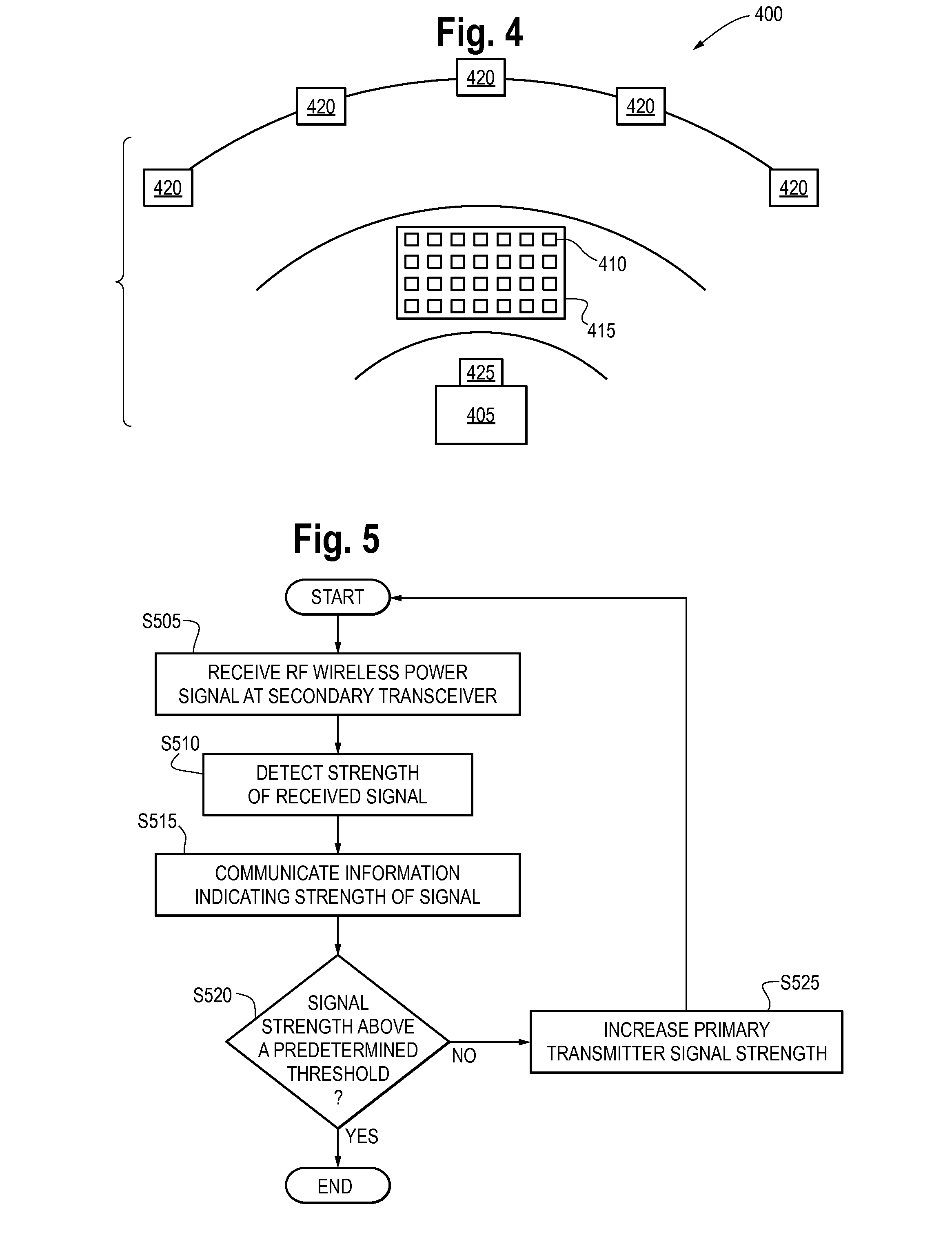Wireless battery charging device, method and system
a wireless power signal and charging device technology, applied in battery data exchange, exchanging data chargers, transportation and packaging, etc., can solve the problems of permanent damage, inability to recharge magnetic fields at large distances, temporary power supplied by batteries, etc., and achieve the effect of simple and inexpensive charging
- Summary
- Abstract
- Description
- Claims
- Application Information
AI Technical Summary
Benefits of technology
Problems solved by technology
Method used
Image
Examples
Embodiment Construction
[0020]While this invention is applicable to embodiments in many different forms, there is shown in the drawings and will herein be described in detail an illustrative embodiment of the invention with the understanding that the present disclosure is to be considered as an exemplification of the principles of the invention and is not intended to limit the broad aspect of the invention to embodiments illustrated.
[0021]FIG. 1 illustrates a general block diagram of the battery charging system 100 according to the present application. As shown, the battery charging system 100 includes a transmitter 105 that is adapted to transmit an RF wireless power signal to a battery charging device 110. A battery receiving portion 115 is in functional communication with the battery charging device 110 and is adapted to hold a battery 120 and apply charge to the battery 120.
[0022]The transmitter 105 can be any device or combination of devices that is / are capable of transmitting an RF wireless power sig...
PUM
 Login to View More
Login to View More Abstract
Description
Claims
Application Information
 Login to View More
Login to View More - R&D
- Intellectual Property
- Life Sciences
- Materials
- Tech Scout
- Unparalleled Data Quality
- Higher Quality Content
- 60% Fewer Hallucinations
Browse by: Latest US Patents, China's latest patents, Technical Efficacy Thesaurus, Application Domain, Technology Topic, Popular Technical Reports.
© 2025 PatSnap. All rights reserved.Legal|Privacy policy|Modern Slavery Act Transparency Statement|Sitemap|About US| Contact US: help@patsnap.com



